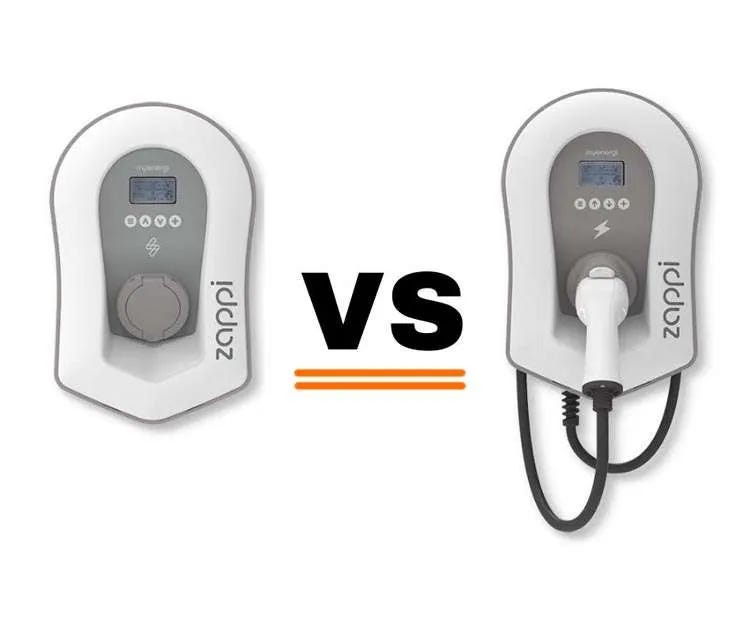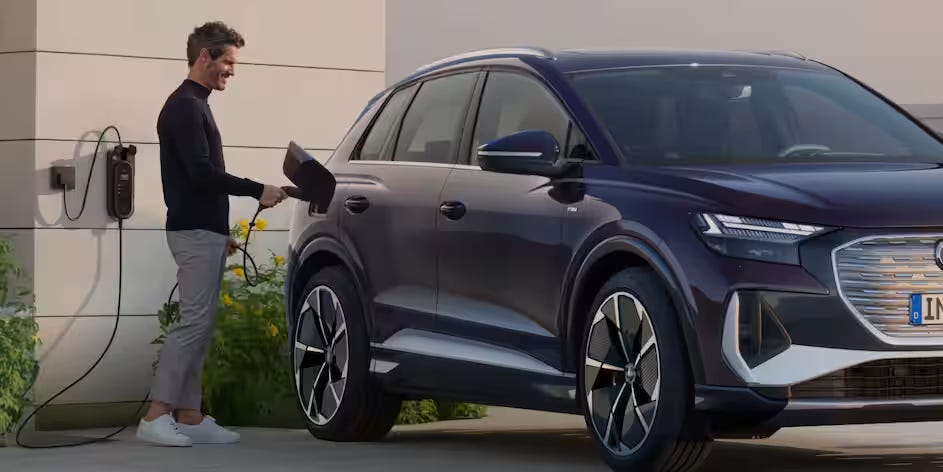Tethered vs Untethered EV Chargers: How to Choose What's Right for You
Understanding Your Options: A Detailed Guide to Tethered and Untethered EV Chargers for Your Home.
Upgrading to an electric vehicle (EV)? One key decision you'll need to make is whether to install a tethered or untethered AC charger in your home. While both types charge your EV's battery, they have distinct differences that impact convenience, flexibility and aesthetics. This guide examines the key factors to consider when deciding between tethered and untethered EV chargers for your needs.
AC charging in brief
AC (Alternating Current) EV charging refers to the use of alternating current to charge EVs.
Unlike DC (Direct Current) charging, which provides rapid charging, AC charging is typically slower and is commonly used for home or workplace charging.
AC chargers typically deliver between 3.6kW and 22kW per hour, filling a 50kW battery from 10% - 100% in 5-7 hours.
AC chargers deliver the Alternating Current from the grid into the vehicle, which is then converted by an onboard “rectifier” inside the vehicle into Direct Current that can be stored in the battery.
AC infrastructure is more cost-effective to deploy and widely available but takes longer to fully charge the vehicle.
AC charging is ideal for overnight charging or when the vehicle will be parked for an extended period.
Introduction to Tethered and Untethered Chargers
Tethered chargers have the charging cable permanently fixed to the EV charger. The cable is typically 6-10 feet (1.8-3M) long, allowing you to conveniently plug into the EV inlet without excessive slack.
Untethered chargers have a socket and provide the flexibility to plug in interchangeable cables as needed - similar to a socket in your home.
Both options deliver the safe, high-powered charging your EV requires. But understanding the unique pros and cons of each is essential to make the best choice for your home and driving habits.
Tethered EV Chargers: Convenience With Some Limitations
Tethered chargers offer simplicity and convenience thanks to their fixed, pre-connected cable. However, the permanence of the attached cable also introduces some potential limitations.
Convenience
The primary benefit of a tethered EV charger is the convenience factor. With the cable permanently affixed, charging takes seconds – simply plug into your vehicle and start charging. No need to unwind, arrange and reconnect a cable each time.
Aesthetics
Tethered chargers are often not as pleasing to the eye as untethered chargers because the cable will always be visible next to the charger when the charger isn’t being used. This makes it harder for the charger to blend into the exterior of the home.
Safety
With no removable cables or additional connections needed, tethered chargers eliminate physical strain or damage from handling cables. Their simplicity adds a degree of safety and reliability.
Limitations
However, the fixed cable also imposes some limitations. You must park closely enough for the attached cable to reach your EV inlet. This may not work for all parking configurations, limiting placement options.
The lack of flexibility also means you can't take the charger cable to another vehicle or location. And if the fixed cable sustains any damage, the entire unit will likely require replacement.
Untethered EV Chargers: Flexibility With Added Handling
In contrast to tethered chargers, untethered chargers feature removable, interchangeable cables that provide greater flexibility. However, they do require some additional physical handling during operation.
Flexibility
Untethered EV chargers give you complete freedom and flexibility to charge in different locations, move the cable out of the way when needed, or even charge a second vehicle with a different inlet type.
Their modular nature means if the cable sustains any damage, you can simply replace the cord while keeping the wall charger unit intact.
Positioning
Since the cable disconnects, you aren't limited by a fixed length when parking. This provides more options for charger placement in your garage or drive as a longer cable can be used.
Handling
The main drawback of untethered chargers is the need to manually connect the cable each time you charge. Thicker cables can be heavy and challenging to manipulate.
Repeated handling also introduces risks of tripping, straining muscles, or damaging the cable over time through wear and tear or being driven over. Proper storage is essential to protect cables when not being used.
Key Differences and Considerations in Choosing
When deciding between tethered and untethered EV chargers, keep these key considerations in mind:
Parking Logistics - Does a fixed cable length work for your parking space or do you need flexibility?
Frequency of Use - Frequent charging makes tethered more convenient while occasional charging benefits from untethered flexibility.
Aesthetic Priorities – Untethered chargers offer a tidier, streamlined look.
Safety Concerns – Limiting handling and tripping hazards may be a priority.
Future Needs – A tethered cable is what it is. If you add an additional Ev in the future with a different inlet type this could cause an issue.
Find the Right Charger for Your Needs
For most homeowners, either a tethered or untethered charger will meet their EV charging needs. Thoughtfully weighing convenience, flexibility, aesthetics and safety based on your specific parking situation, usage frequency and future plans will ensure you select the optimal setup.
With a clear understanding of the pros and cons of each type, you can make an informed decision on the best EV charger for your home. Soon you'll be charging your electric vehicle safely and conveniently as you drive towards an electrified future.







Would there be any issue with leaving your car's cable connected to an untethered EV charger that's mounted on the back wall of your house?
Hilarious!